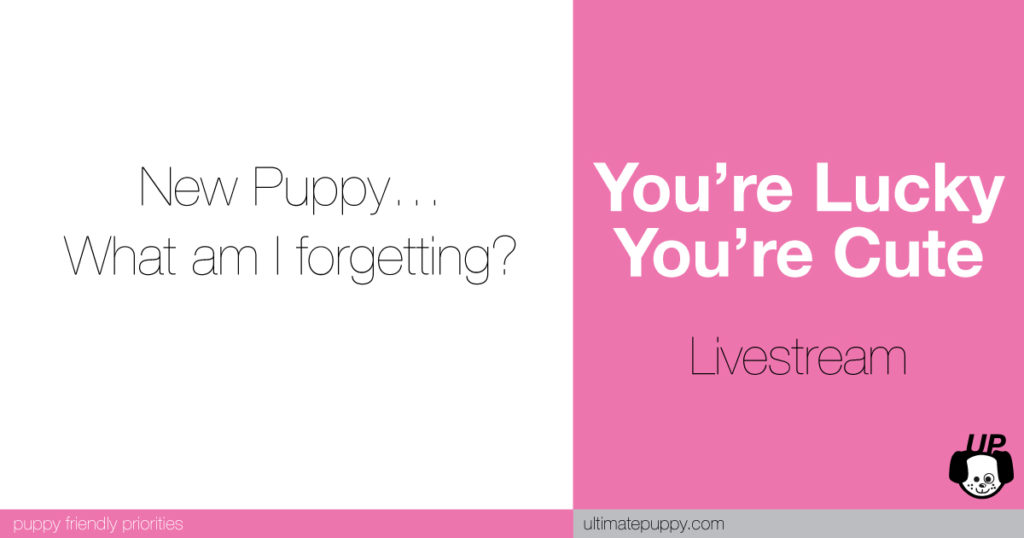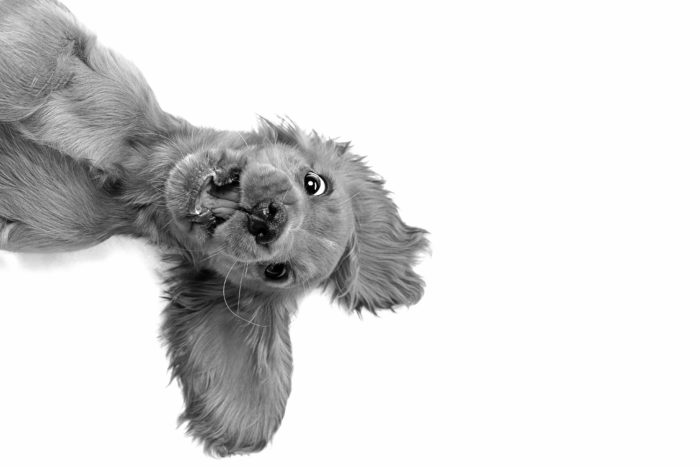What Does It All Mean?
It seems like most folks have a vague idea about what socialization is. More people are enrolling in puppy classes and this is a great thing. But what is it really and why does it matter? What does it mean specifically for a new puppy person and the dog now in their charge?
There is a small window of time in a pup’s early development where, what happens or does not happen, will have a significant impact on his entire life.
In his ‘Handbook of Applied Dog Behavior and Training‘ Steven Lindsay says “During a brief period from 3 to 16 weeks of age, an average puppy will probably learn more than during the remaining course of its lifetime, forming a lasting emotional and cognitive schemata of the social and physical environment. Furthermore, these early experiences format the general outline and organization of how and what the dog is prepared to experience and learn in the future.”
We know for sure that it is a time-sensitive, paramount consideration. Best practice means that it is understood and carried out proactively and thoughtfully with a new puppy.
Invisible Gains
Socialization isn’t sexy but it should be. My theory on why people don’t get excited about socialization is because of the lack of tangible returns. You teach your puppy to sit when you ask and are rewarded almost instantly because you are able to see him do the behavior. Socialization, on the other hand, is not so easy to spot since you will not see the benefit of your efforts immediately or maybe never notice them at all. It is only when that work has gone undone and the dog suffers that you notice. Then it is too late. Know that your attention to detail in this area will have myriad long-ranging positive effects.
Here are three tips to help you rise to this important occasion.
1. Think Everyday Items
While it might not be in the schedule to get out on an elaborate socialization field trip with your puppy every day you can still do interesting and worthy introductions at home using seemingly ‘everyday items’ from around the house.
Make An Obstacle Course
With a handful of yummy treats take your puppy exploring right in your own living room. Scatter treats about or feed the pup as he explores, safely and at his own pace.
- Trash bags or tarps draped over a couple of small piles of stacked books or big pillows can make strange, uneven surfaces.
- A baking tray also makes a weird, slippery surface for your puppy to explore. I like to put the tray on something skid proof, for example, a yoga mat makes a great base from which to build your novel surfaces for puppy exploration.
- Drape a sheet over a couple of chairs and create an opaque curtain for the puppy to walk through or you could call him to come from one side to the other a couple of times.
If Music Be The Food Of Love, Play on
It is important to NOT startle the pup but introduce a sound gradually and from a distance. And remember to ALWAYS pair with tasty treats.
- Get out your bongos, tambourines, and maracas. If there is a guitar or a piano, let the music play.
- Dollar stores or thrift shops are good bets to find instruments if you don’t have any.
- Let the pup see and sniff the instrument before you make any noise with it.
- Introduce the noise at a low volume from a distance.
- Wait to see if the puppy is interested in coming closer, investigating, and is curious.
- You can also make noise with a hairdryer, a vacuum, or a blender.
Play Dress Up
Big floppy hats, Halloween masks or wigs are good props. My students with children have no shortage of fun things for us to get creative with.
2. Seasonal Miss Outs
If you live in a climate with drastic weather changes like my students do you will want to consider what the different seasons bring. Puppies that go to new homes in the winter miss out on seeing warmer weather things like hoses, bikes, and skateboards because they are not around. Pups that go to their homes in the summer miss out on winter wear, snow shovels, and plows. As a result, we end up with pups nervous about these things when that season does roll around.
Get creative with introductions of these seasonal missouts. If you have a summertime puppy, bring out the winter coats and simulate some snow shoveling. Roll out your bikes and skateboards for a quick meet and greet for those wintertime pups
- Winter parka with the hood up
- Bulky winter boots
- Umbrellas
- Bundle Buggy
3. Make A Plan
I have discovered the value of a plan when it comes to teaching my dogs. If you don’t have a plan you don’t really know what you are doing and this early socialization is too important to leave to chance.
We have created lists and worksheets for you to use to get inspired and think strategically in regard to your pup’s socialization. The Socialization Section at Ultimate Puppy is full of photos of the work being done and troubleshooting tips.
The Social Schedule has been designed just for you to help you navigate this period of development with your puppy.
Please use these and feel free to share far and wide.
Have you gone on any interesting socialization expeditions with your pup lately? Have you noticed any stress in your adult dog regarding things that may have been missed during early introductions?
Happy Puppy Raising!
We help you get ready
Don’t forget, we now have an online lesson with eBook and videos for anyone that’s getting ready to bring home a puppy…



